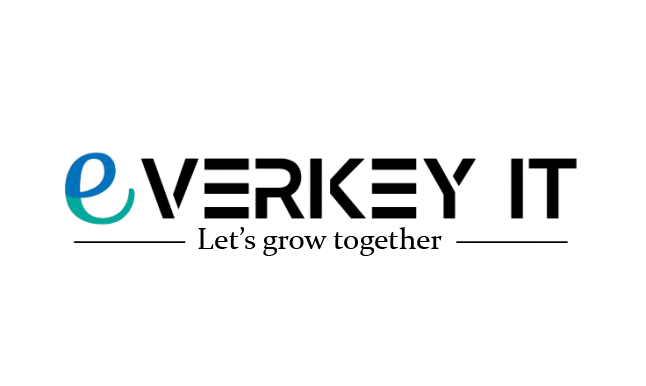At Everkey IT, we recognize the importance of social media advertising for businesses of any size in today’s digital landscape. Social media such as Facebook offers businesses of any kind a powerful means of targeting specific customers efficiently with targeted ads. If your company is considering Facebook Ads Setup as part of its marketing mix, learning how to set them up properly is imperative; our team at Everkey IT are here to assist in that endeavor so your marketing goals are achieved efficiently.
Why Consider Facebook Ads For Marketing Strategies
Before diving in to setup, let’s discuss why using Facebook ads as part of your marketing strategy would be advantageous.
1. Extensive Reach
With over 2.8 billion active users every month, Facebook provides unparalleled access to a vast audience that companies can leverage for connecting with potential customers of various demographics and interests.
2. Advanced Targeting Options
Facebook Ads offer advanced targeting options that make it possible to pinpoint specific audiences based on location, age, interests behavior and interests – helping ensure that your ads reach the correct people and increase conversions and engagement rates.
3. Cost-Effective Advertising
You can customize a budget that best meets your requirements, making Facebook ads accessible for any business. Start with a modest budget and increase it once results start showing, giving your advertising strategy maximum flexibility.
4. Variety of Ad Formats
Facebook offers various ad formats that you can choose from when creating ads for products and services on its platform, including video ads, image ads and carousel ads. With such options at your disposal, finding one to best promote your product or service becomes simple.
Step One of Establishing Facebook Ads
Before setting up ads on Facebook, a business manager account is necessary. This platform enables you to oversee ads pages, accounts and staff who oversee them.
Simply visit business.facebook.com, select “Create Account,” enter your company initials, name of company, email address for business use and follow the onscreen instructions to complete configuration of an Ad Account. Step 2: Set Up Ad Account
Once the Business Manager account has been created, you must establish your ad account.
Business Manager allows users to configure business settings. Under “Ad Accounts,” choose “Add.” After creating a new account on the site, name it accordingly and set time zone/currency preferences before assigning it to your company. Step 3: Establish Marketing Objectives
Establish your marketing goals before creating an ad on Facebook. Choose from various goals available on the platform such as:
Brand Awareness:
Expand awareness for your brand among potential customers. Traffic Attraction: Attract visitors to your landing page or website. Engagement Allow users to interact by engaging with content (via likes, comments and shares).
Conversions Identify key activities on your site, such as purchases or sign-ups. Your goal will help guide the rest of the ad setup process.
Target Your Audience
Facebook Ads Setup provide one of the most effective means of reaching their intended audiences, so the next step in creating effective Facebook advertisements should be identifying your target audience. To do this:
Use Facebook’s Audience
Insights tool to explore demographics and interests of your target audience. Click “Locate” within Ad Set Manager, to define them according to gender, age, location, interests and behaviors.
Custom Audiences allow you to target specific data or website users with specific ads.
Step 5: Establish Your Budget and Schedule
To ensure the campaign goes as smoothly as possible, determine how much money you want to invest into advertisements each day or over its duration. Choose either a daily or life-time budget (the average daily investment) for maximum flexibility.
Within your “Ad Set,” scroll to “Budget & Schedule.”
Choose your budget type and enter an amount for ad display; additionally you may set either continuous display or set starting and ending dates for ads to run continuously or selectively. Step 6: Select Your Ad Format
Facebook provides various advertising formats, so that you can select one most suitable to meet the goals of your campaign:
Image ads:
An easy and effective way to show off your products. Video ads: Useful for storytelling while showing the products. Carousel ads: Users can scroll through various videos or images at once. Slideshow advertisements: Convey your message using motion, sound and text.
Step 7: Formulate Ad Content
Ad content creation is crucial to drawing in viewers and driving engagement with viewers, so here are some guidelines on creating ads that are effective:
Engaging Visuals
Make use of high-quality videos or images that are both aesthetically pleasing and relevant to the message that you wish to send out.
Clear Copy Write ad copy that clearly communicates the value position of your business.
Call to Action (CTA): Include an eye-catching call-to-action that encourages users to take an action such as “Shop Now” or “Learn More.” Step 8: Review and Publish Your Ad
Once your ad has been created, check all settings are accurate before publishing it for review and publication.
Review The Ad
Preview to view how your advertisement will appear across various devices, review your goals, budget and schedule before pressing “Publish” to launch your advertising campaign.
Step 9: Monitor and Optimize Ads
Once your ads have begun running, it is vital that they be frequently evaluated for performance using Ads Manager. By keeping an eye on key metrics like this one, monitoring should become part of daily business lifecycle tasks.
Impressions CTR and CPC
Conversions Leverage the data you have available to optimize your ads by changing their target, appearance or budget. Conduct A/B tests between various ad variants to see which resonate most with customers.





No comment